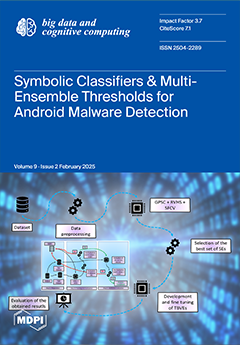For the past few decades, brain tumors have had a substantial influence on human life, and pose severe health risks if not treated and diagnosed in the early stages. Brain tumor problems are highly diverse and vary extensively in terms of size, type,
[...] Read more.
For the past few decades, brain tumors have had a substantial influence on human life, and pose severe health risks if not treated and diagnosed in the early stages. Brain tumor problems are highly diverse and vary extensively in terms of size, type, and location. This brain tumor diversity makes it challenging to progress an accurate and reliable diagnostic tool. In order to effectively segment and classify the tumor region, still several developments are required to make an accurate diagnosis. Thus, the purpose of this research is to accurately segment and classify brain tumor Magnetic Resonance Images (MRI) to enhance diagnosis. Primarily, the images are collected from BraTS 2019, 2020, and 2021 datasets, which are pre-processed using min–max normalization to eliminate noise. Then, the pre-processed images are given into the segmentation stage, where a Variational Spatial Attention with Graph Convolutional Neural Network (VSA-GCNN) is applied to handle the variations in tumor shape, size, and location. Then, the segmented outputs are processed into feature extraction, where an AlexNet model is used to reduce the dimensionality. Finally, in the classification stage, a Bidirectional Gated Recurrent Unit (Bi-GRU) is employed to classify the brain tumor regions as gliomas and meningiomas. From the results, it is evident that the proposed VSA-GCNN-BiGRU shows superior results on the BraTS 2019 dataset in terms of accuracy (99.98%), sensitivity (99.92%), and specificity (99.91%) when compared with existing models. By considering the BraTS 2020 dataset, the proposed VSA-GCNN-BiGRU shows superior results in terms of Dice similarity coefficient (0.4), sensitivity (97.7%), accuracy (98.2%), and specificity (97.4%). While evaluating with the BraTS 2021 dataset, the proposed VSA-GCNN-BiGRU achieved specificity of 97.6%, Dice similarity of 98.6%, sensitivity of 99.4%, and accuracy of 99.8%. From the overall observation, the proposed VSA-GCNN-BiGRU supports accurate brain tumor segmentation and classification, which provides clinical significance in MRI when compared to existing models.
Full article





